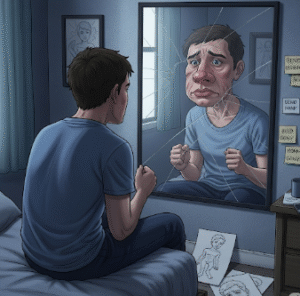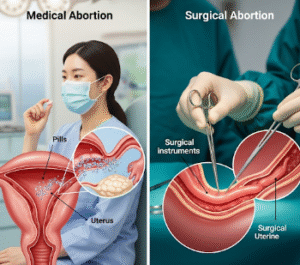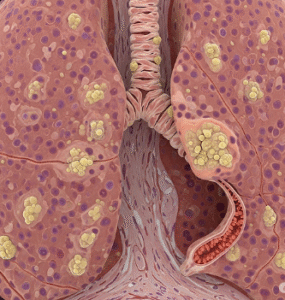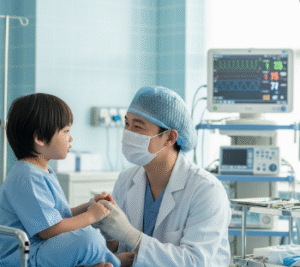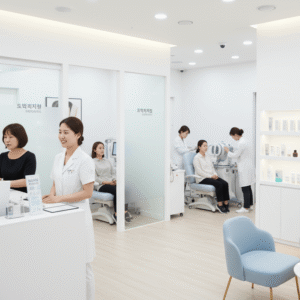Overview
Epiphora is the medical term for excessive tearing or watery eyes, resulting from either overproduction of tears or impaired tear drainage. While tears normally help lubricate, protect, and nourish the eyes, epiphora can cause blurred vision, discomfort, and social inconvenience. The condition can affect one or both eyes and may be temporary or chronic, depending on the underlying cause. In Korea, ophthalmology clinics and specialized eye centers provide advanced evaluation, management, and treatment of epiphora, including both non-invasive and surgical interventions to restore tear balance and prevent complications.
Highlights:
➤ Excessive tearing or watery eyes – Can be constant or intermittent
➤ Caused by overproduction or drainage issues – Including infection, irritation, or blockage
➤ May impact daily activities and quality of life
Key Facts
➤ Prevalence: Common across all age groups; particularly seen in children and older adults
➤ Age affected: Can occur at any age; congenital or age-related causes are common
➤ Gender: Both males and females are equally affected
➤ Impact: May cause blurred vision, irritation, skin maceration, or social discomfort
➤ Prognosis: Most cases are treatable with proper evaluation and intervention
What is Epiphora?
Epiphora occurs when there is an imbalance between tear production and drainage. Normally, tears drain through the puncta into the nasolacrimal duct, reaching the nose. Excessive tearing can result from:
- Overproduction of tears: Triggered by irritation, allergies, infections, or reflex tearing from foreign bodies
- Impaired drainage: Caused by nasolacrimal duct obstruction, eyelid malposition, scarring, or congenital anomalies
- Abnormal eyelid function: Entropion (inward turning) or ectropion (outward turning) affecting proper drainage
Key characteristics include:
- Overflow of tears onto the cheeks
- Chronic watery eyes
- Redness or irritation from continuous wetness
- Blurred vision due to excess tear film
Highlights:
➤ Can result from either overproduction or drainage obstruction
➤ Persistent cases require medical evaluation
➤ Early treatment prevents secondary complications
What Symptoms Are Related to Epiphora?
➤ Constant watery eyes – Primary symptom
➤ Redness or irritation – Caused by tear overflow and prolonged moisture on the skin
➤ Blurred vision – From tear film interference with light refraction
➤ Crusting around eyelids or lashes – From stagnant tears
➤ Pain or swelling near the inner corner of the eye – Could indicate infection or blockage
➤ Eye discomfort or burning – Secondary to irritation or inflammation
➤ Discharge in addition to tears – Suggests infectious causes such as dacryocystitis
Highlights:
➣ Symptoms vary depending on underlying cause
➣ Persistent tearing or associated pain warrants prompt ophthalmologic assessment
What Causes / Possible Causes
➤ Ocular surface irritation: Dry eye syndrome, foreign bodies, allergies, chemical exposure
➤ Blocked tear ducts: Congenital in children; acquired in adults due to infection, inflammation, trauma, or aging
➤ Eyelid malposition: Entropion or ectropion interfering with tear drainage
➤ Infections: Conjunctivitis, blepharitis, or dacryocystitis
➤ Environmental factors: Smoke, wind, dust, or chemical irritants
➤ Systemic conditions: Autoimmune diseases, cranial nerve dysfunction affecting eyelid muscles
➤ Medication side effects: Eye drops or systemic medications may increase tear production
Highlights:
➣ Causes may be temporary, chronic, structural, or systemic
➣ Identifying the underlying factor is essential for effective treatment
When Should I See My Doctor?
➤ Persistent or worsening tearing – Lasting more than a few days or weeks
➤ Associated redness, pain, or swelling – Could indicate infection or blockage
➤ Discharge or crusting around the eyes – Suggestive of conjunctivitis or dacryocystitis
➤ History of trauma or eyelid abnormalities – May affect tear drainage
➤ Blurred vision or visual disturbances – Requires ophthalmologic evaluation
Highlights:
➣ Early consultation with a Korean ophthalmologist ensures accurate diagnosis
➣ Timely management prevents skin irritation, secondary infections, and vision problems
Care and Treatment
➤ Artificial tears or lubricating eye drops: For mild irritation or dry eye-induced tearing
➤ Warm compresses: Help promote tear drainage and relieve mild blockages
➤ Eyelid hygiene: Cleaning eyelids and lashes to reduce infection risk
➤ Medications: Antibiotic or anti-inflammatory drops for infections or inflammation
➤ Surgical intervention: Dacryocystorhinostomy (DCR) or punctal dilation for severe nasolacrimal duct obstruction
➤ Lifestyle adjustments: Avoid allergens, wind, or smoke; manage screen time
➤ Monitoring: Track frequency, triggers, and associated symptoms
Highlights:
➣ Treatment is cause-specific and ranges from conservative to surgical approaches
➣ Early care ensures symptom relief and prevention of complications
Treatment Options in Korea
Medical Treatments:
➤ Ophthalmology clinics: Comprehensive eye exams, tear drainage assessment, and imaging
➤ Prescription medications: Antibiotics, anti-inflammatories, or lubricants depending on cause
➤ Punctal plugs or dilation: For mild drainage obstruction
Advanced Procedures:
➤ Dacryocystorhinostomy (DCR): Surgical creation of a new tear drainage pathway for severe obstruction
➤ Laser-assisted procedures: Minimally invasive treatment for nasolacrimal duct blockage
➤ Follow-up care: Regular evaluation of tear drainage, ocular surface health, and prevention of recurrence
Rehabilitation & Follow-Up Care:
➤ Education on eyelid hygiene, allergen avoidance, and proper tear management
➤ Continuous monitoring for recurrence or postoperative complications
➤ Multidisciplinary care for patients with systemic causes contributing to epiphora
Highlights:
➣ Korean eye centers provide advanced diagnostics, tailored therapy, and long-term follow-up
➣ Early intervention ensures effective symptom control, eye health preservation, and improved quality of life







